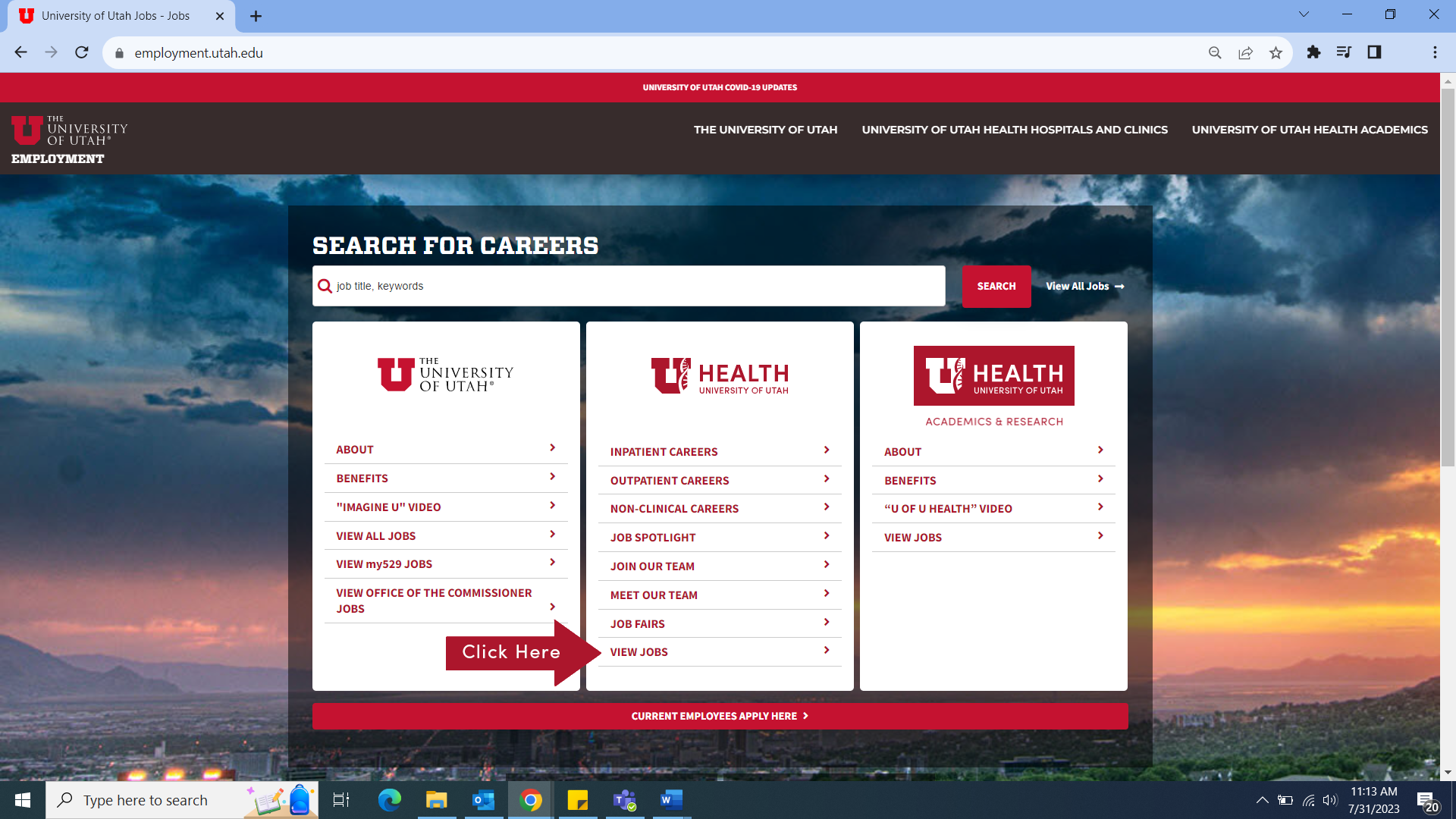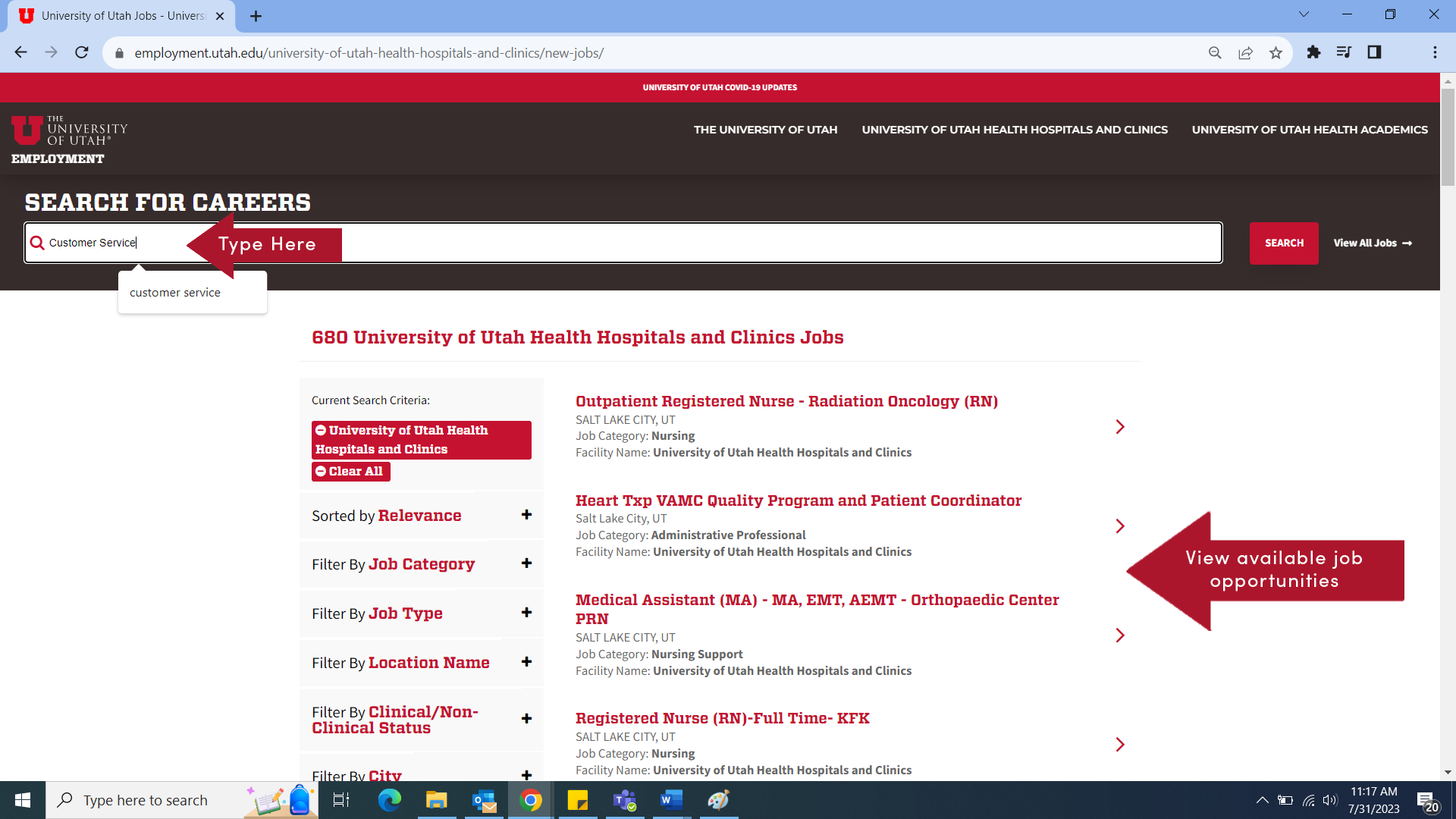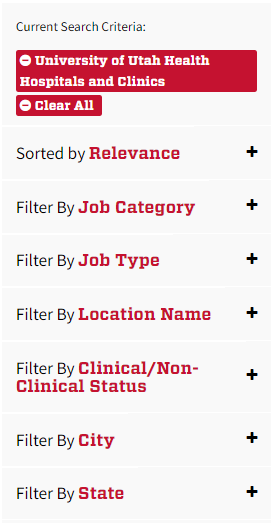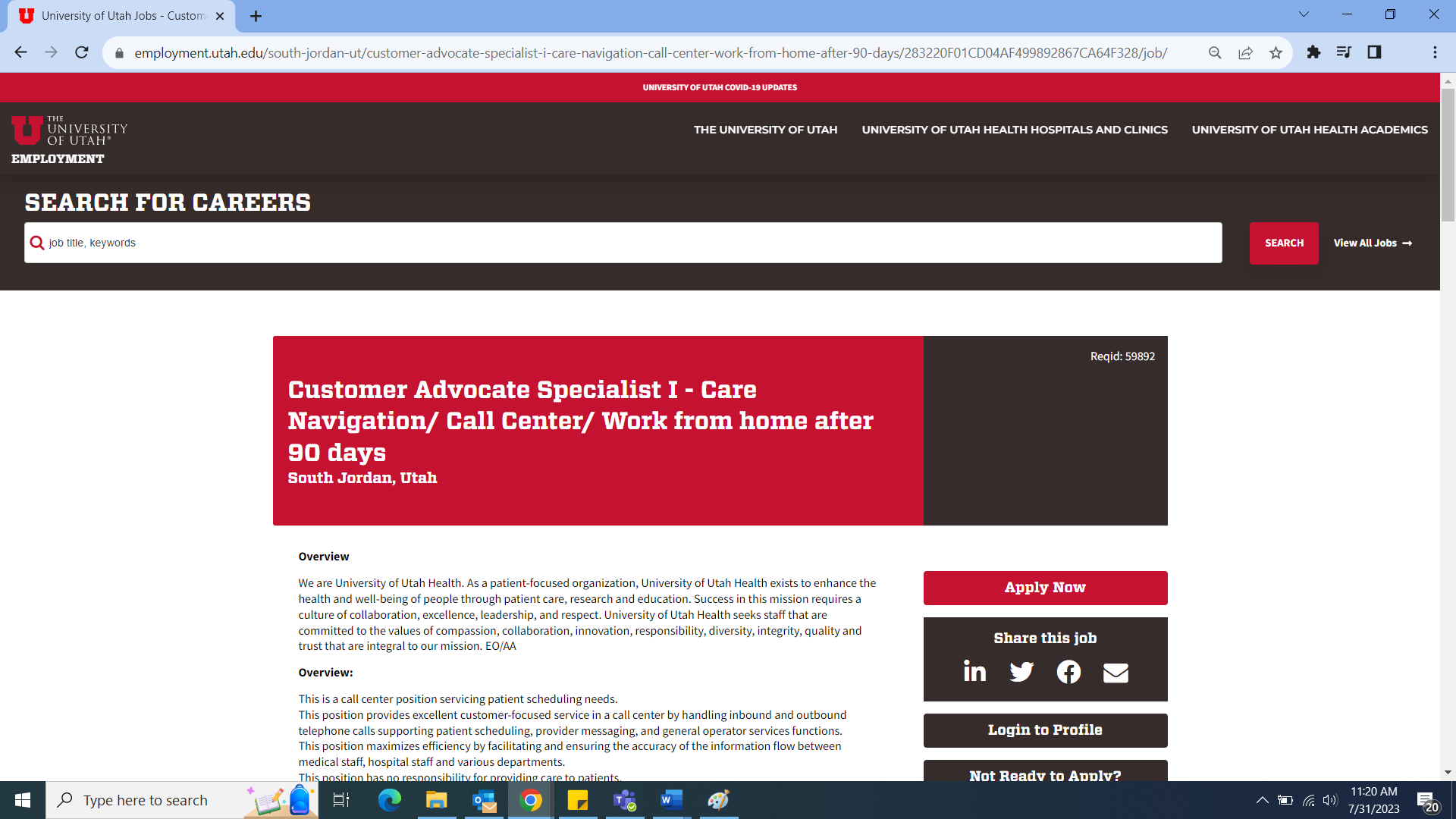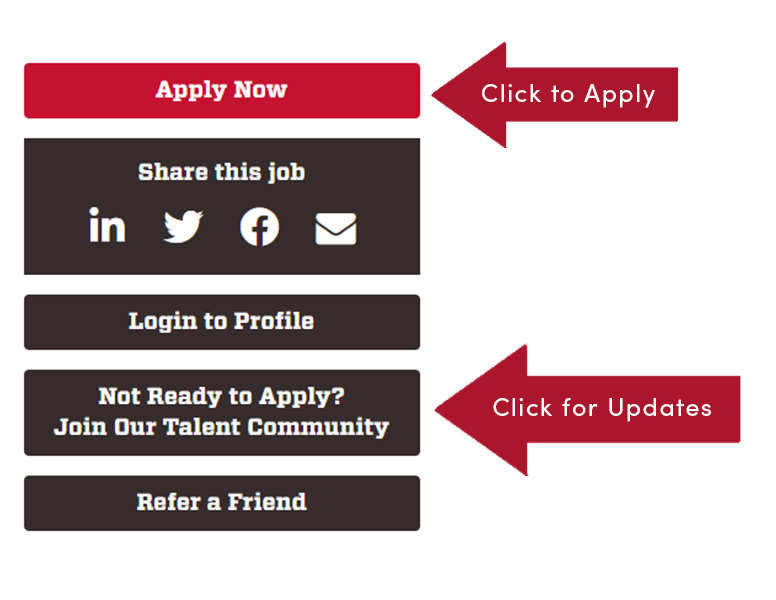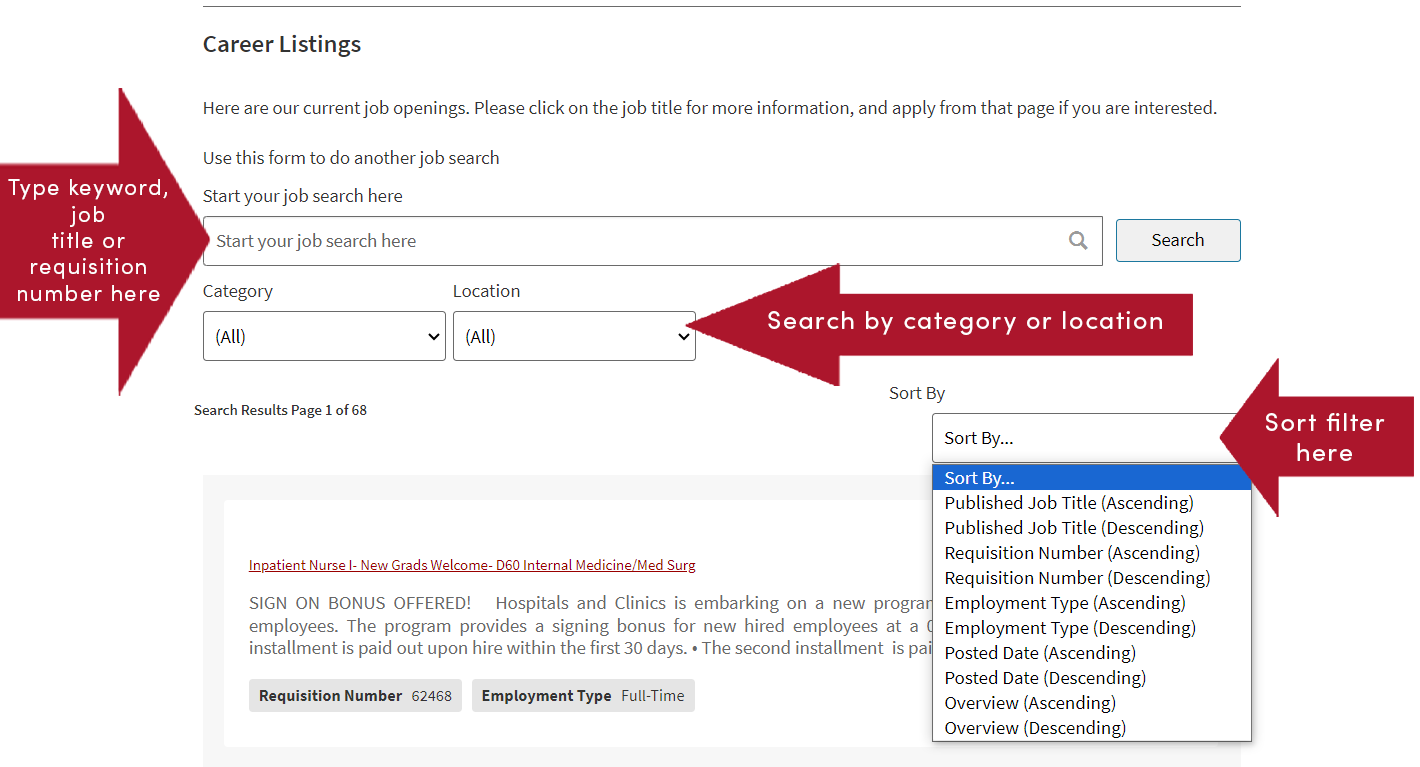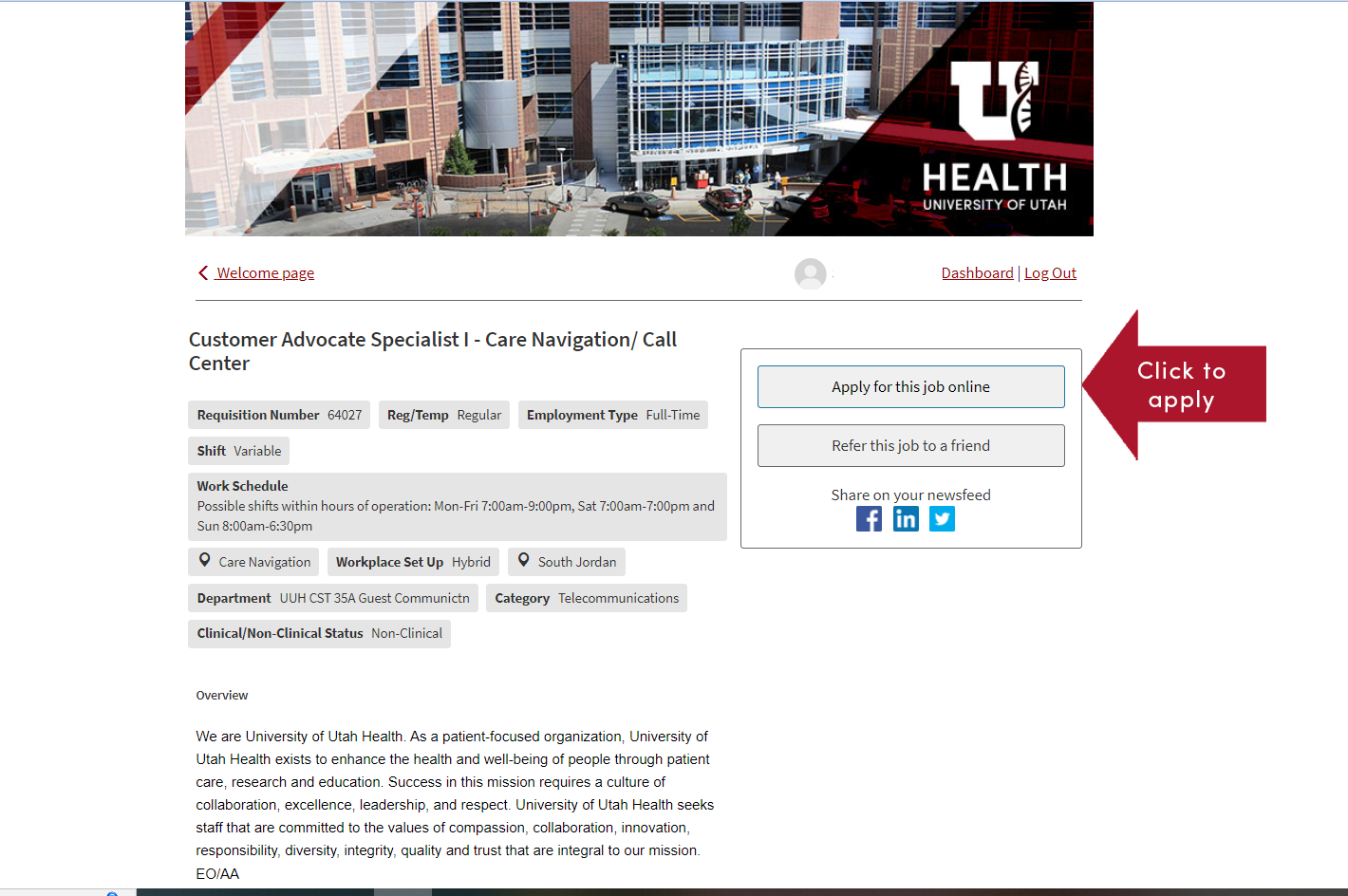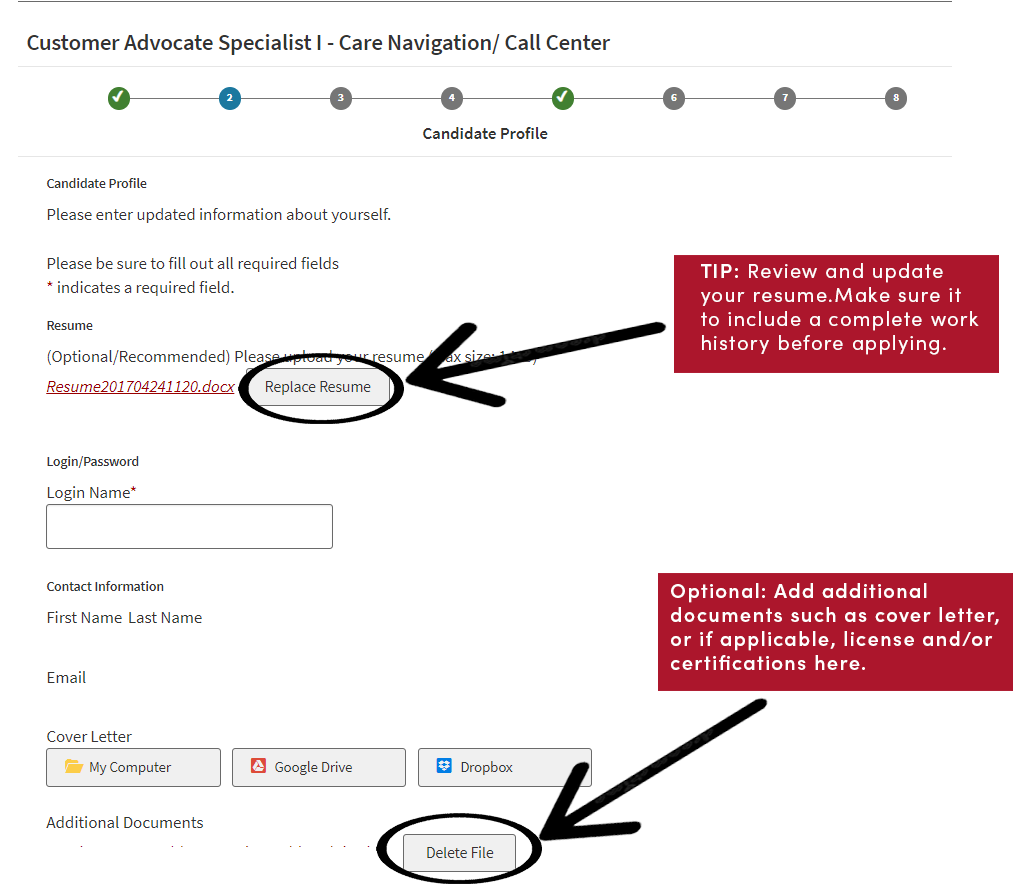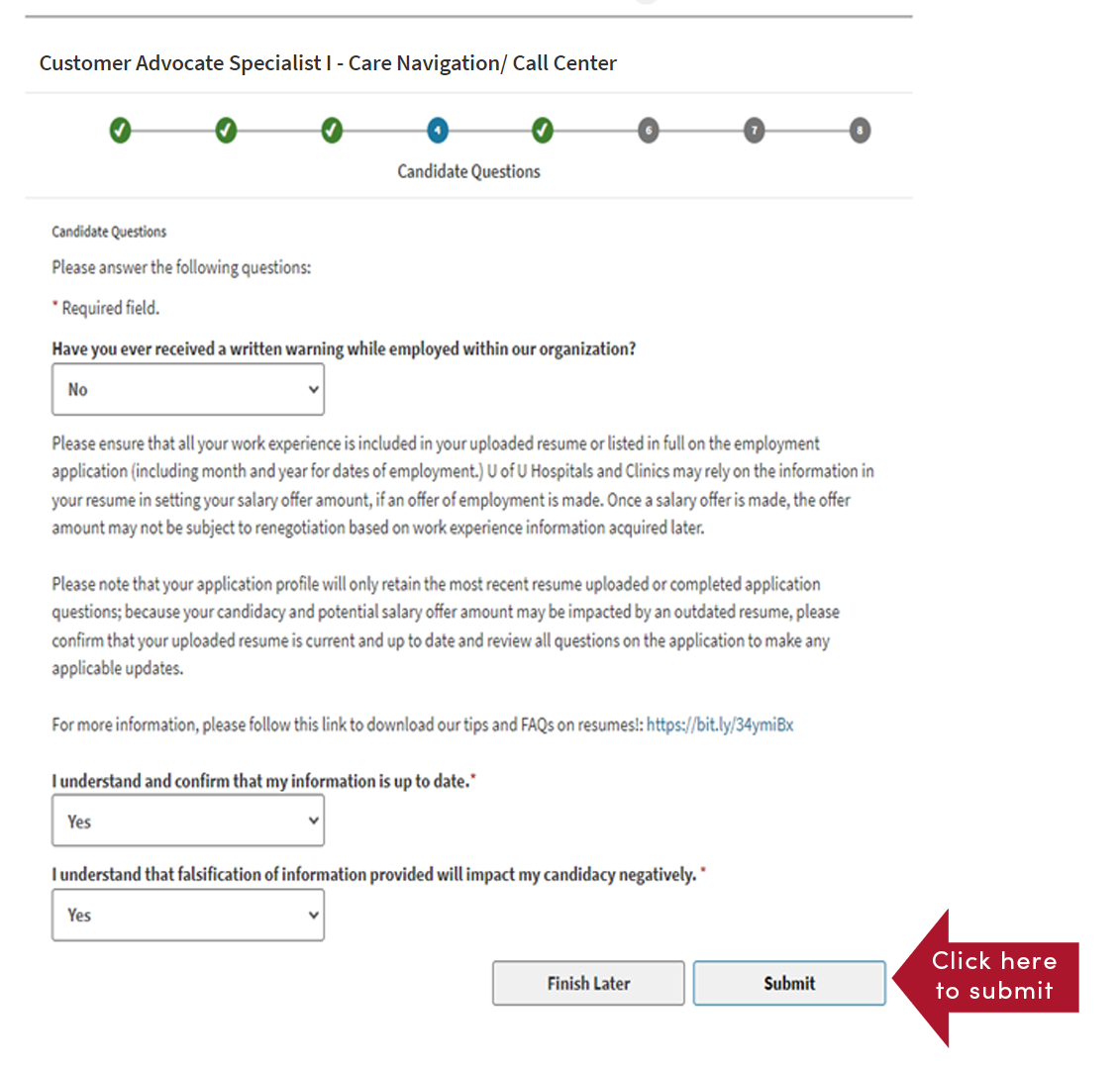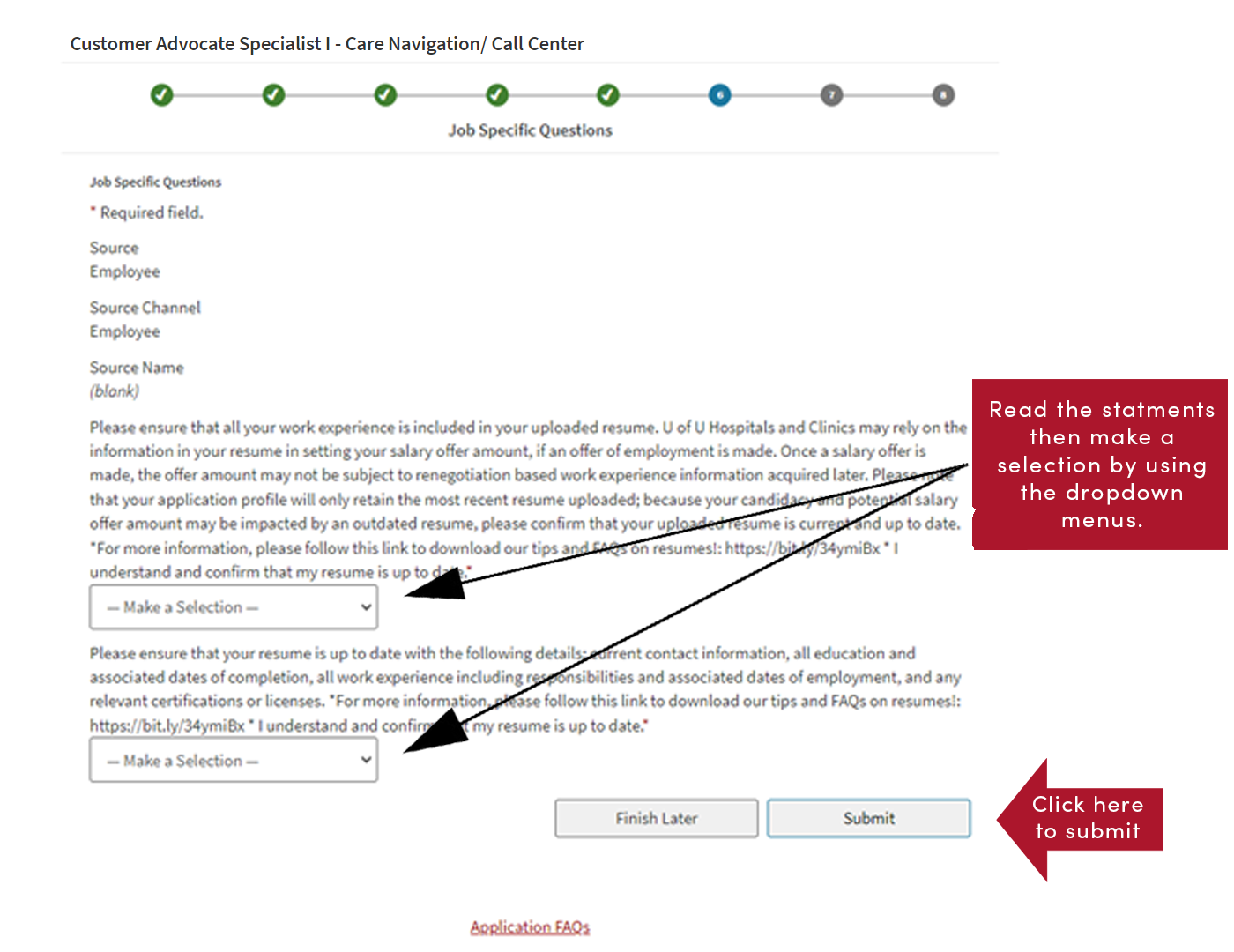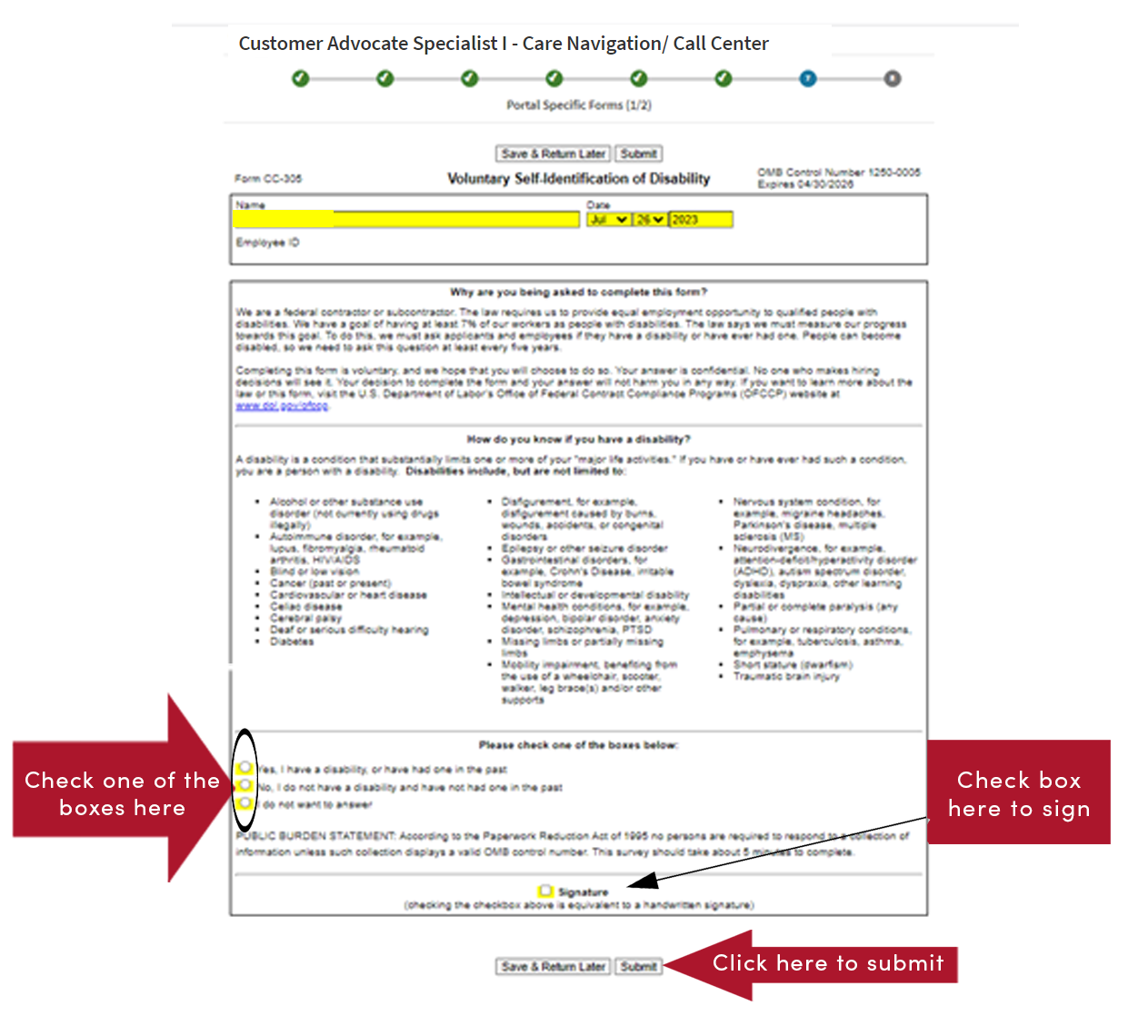The task of finding and applying for a new job can feel a little overwhelming. Where do I begin? How do I find the right job for me? What should I include on my resume? We’ve created some step-by-step guides below to help you along your job application journey, from searching our employment site to crafting the perfect resume and preparing for the interview.
How to Create a Resume
A well-developed resume is an important part of the job interview process. It is an opportunity to show a hiring manager your work history, your strengths and your accomplishments. Below are some helpful tips to help you create the perfect resume to submit with your job application.

Resume Formats
There are a variety of formats to choose from when preparing a resume. The most common resume formats are Chronological, Functional and Combination (Hybrid). When choosing a format, it’s important to understand the function of each format before deciding which to use.
Please note: University of Utah Health may rely on your application or resume in setting an offer amount, if an offer of employment is made. Dates of employment will be requested, therefore, it’s important that resumes include all work history and dates in a month/year format.
RESUME TIP: Read the complete job description to gain a full understanding of the role and what the department is looking for. Make sure to read the minimum requirements and ensure your resume clearly outlines that you meet those qualifications. Furthermore, decide what you feel you want the hiring manager to know about you and allow the description to help guide you.
Chronological Resume
- Provides dates of employment for each job and educational experience, listed in chronological order (most recent listed first).
- Works best for those who have progressed in job titles or roles throughout their career and have a good work history.
- Most common within the same industry or type of work.
Functional Resume
- Highlights specific skills that qualify you for a position and the desired role.
- Generally, does not emphasize dates of employment but instead highlights relevant skills within specific areas such as customer service, sales, merchandising, etc.
- Works best for those who may have significant gaps in employment, lack experience or are changing career paths. Commonly used by recent graduates and career changers.
Combination Resume
- Details work history along with skills.
- Generally, includes a “Skills Summary” section which can highlight relevant job-related skills.
- Great way to combine the chronological format for work history along with the functional resume which highlights relevant skills.
Formatting Tips
- The length of your resume is not as important as the content. Do not feel the need to limit your resume to one page. U of U Health does not place a limit on the number of pages within a resume. It is important is to ensure that you have provided all of the necessary information to support your qualifications during the application process. Customize and tailor your resume to the job you are applying for.
- Bullet points can be helpful to the reader. If you wish to highlight specific areas of your resume in a clear and concise way, bullet points can help guide the reader easily through the important areas of a resume.
- Customize your resume to fit the position you are applying for. Ensure your resume is relevant to the type of work or role you are applying for. There is no such thing as “one size fits all”.
- Check your resume for punctuation, spelling, grammatical errors, and poor sentence structure. Make sure your resume is clear and easy to read. Use proper spacing between sentences and avoid using abbreviations or unfamiliar acronyms.
Sections within a Resume
Contact Information
- Important Information to Include:
- Full Name (First and Last)
- Mailing address
- Cell phone number
- Email address.
- If you have a LinkedIn Profile, consider adding a URL to showcase your profile.
- RESUME TIP: Make certain the email address is professional.
- Good Example: John.Smith@gmail.com
- Poor Example: BadHairDayz@gmail.com
Education (Degrees, Certifications, etc.)
List all college degrees in reverse chronological order (most recent first); include date of completion for each in (MM/YYYY) format.
EXAMPLE:
University of Utah, Master Degree Nursing (MSN) – 06/2019
University of Utah, Bachelor Degree Nursing (BSN) – 06/2013
Salt Lake Community College, Associate Degree Nursing – 04/2009List all relevant certifications; include dates of completion. If the position you are applying for would require a certification or is beneficial to the role, make sure to include this information.
EXAMPLE:
Advanced Trauma Care for Nurses (ATCN) from Society for Trauma Nurses – 06/2021If currently enrolled in school and if beneficial to the role or organization, list current college courses and anticipated date of completion in (MM/YYYY) format. Include future graduation dates.
EXAMPLE:
University of Utah, Health Care Administration
MHA – Anticipated completion - 06/2025
Licenses
- If the position you are applying for would require or prefer a license, make sure to include the following information:
- Type of License
- Licensing Authority and/or State Issued
- Name as it presents on your license/certification and Licensing Authority/DOPL.
- License Number
EXAMPLE:
Registered Nurse, Utah, License No. 200751-0100
Work Experience & Accomplishments
- Remember to include:
- Company name/organization
- Position or job title
- Location
- Dates of employment - Make sure to include start date through end date in MM/DD/YYYY format.
EXAMPLE:
Registered Nurse; Neonatal Intensive Care Unit
Intermountain Healthcare, Provo, Utah
01/13/2014 – 12/16/2017 - Chronological order for work history is preferable, start with your most recent employment.
- This area of a resume can be useful to highlight specific work or training related achievements as well. It’s important and valuable to describe what type of achievements, awards or projects you had participated in that were successful.
- RESUME TIP: If you are applying for a clinical or nursing position, be sure to include information regarding clinical rotations and any Cap Stone projects that were successfully completed. This information can be a great way to describe your hands on work experiences and accomplishments while in training.
- RESUME TIP: Highlight relevant work experience or accomplishments by using strong action verbs. Follow up with a describing sentence that answers the questions of who/what/how many. End your statement by describing the why/purpose/end result or benefit of your accomplishment.
EXAMPLE:
Assisted in the development and implementation of new neonatal advanced trauma care security plan for a staff of 25 NICU nurses that resulted in improved best practices and an increase of 42% in overall patient and family satisfaction survey.
Skills
- List specific relevant skills. Review the job description, roles and responsibilities, and highlight any skills you feel match or are the most proficient, adding value to the organization.
- RESUME TIP: Review the job announcement and read through the roles and responsibilities. Highlight any relevant skills or experience you may have that correspond with the position requirements.
Activities/Volunteer Work/Interests (Optional)
- This section of a resume is optional and can be used to include information about clubs, professional organizations, leadership activities, community involvement and volunteer work. Additional information such as this can be helpful to learn more about you and your interests.
References
- As part of the onboarding process for U of U Health, once an offer of employment has been formally extended, professional references will be requested and verified at that time. It is not required to provide references on the resume.
Cover Letter
- Cover letters can be a wonderful way to help introduce yourself and provide a brief description of your interests and qualifications for the position. If you decide to prepare a cover letter, be sure to upload to your application as one single PDF or WORD document together with your resume.
- COVER LETTER TIPS: Keep your cover letter concise with a few short paragraphs. Be specific about your qualifications and what you feel makes you the best fit for the position.
How to Search and Apply for Jobs at U of U Health
Interview Guide for Best Practices
Congratulations! If you are reading this, you are likely preparing for an interview. An interview is an opportunity to meet with our hiring team, such as managers or recruiters, to showcase your skills and demonstrate how you fit within our organization.
Preparing for the Interview
Preparing in advance for an interview can help you feel more at ease and confident. Click on the icons below for tips and recommendations for how to properly prepare for the interview process.
During the Interview
The big day is finally here. You’ve prepared the best you can and now it’s time to meet with our recruiters and hiring managers. Below are some important things to keep remember during your interview.
After the Interview
The interview is done! Now what? Read below to find out the best methods for following up after the interview.
Questions? Here’s how to Contact Us.
If you have additional questions, you may also reach out to your assigned recruiter for additional follow-up. If you are uncertain of who your U of U Health Hospitals and Clinics recruiter is you may send an email to careers@hsc.utah.edu .

